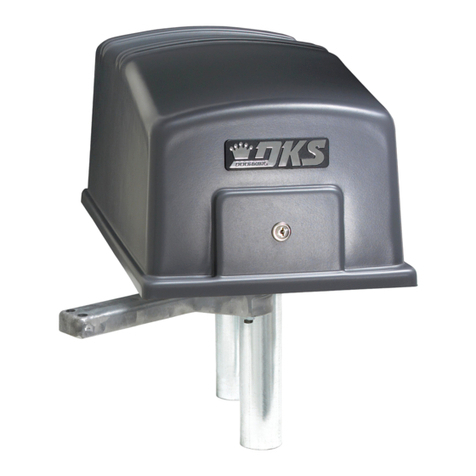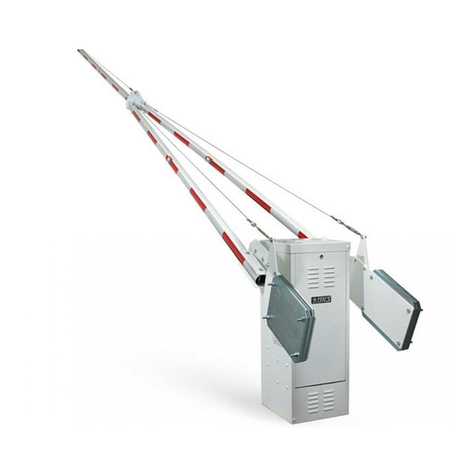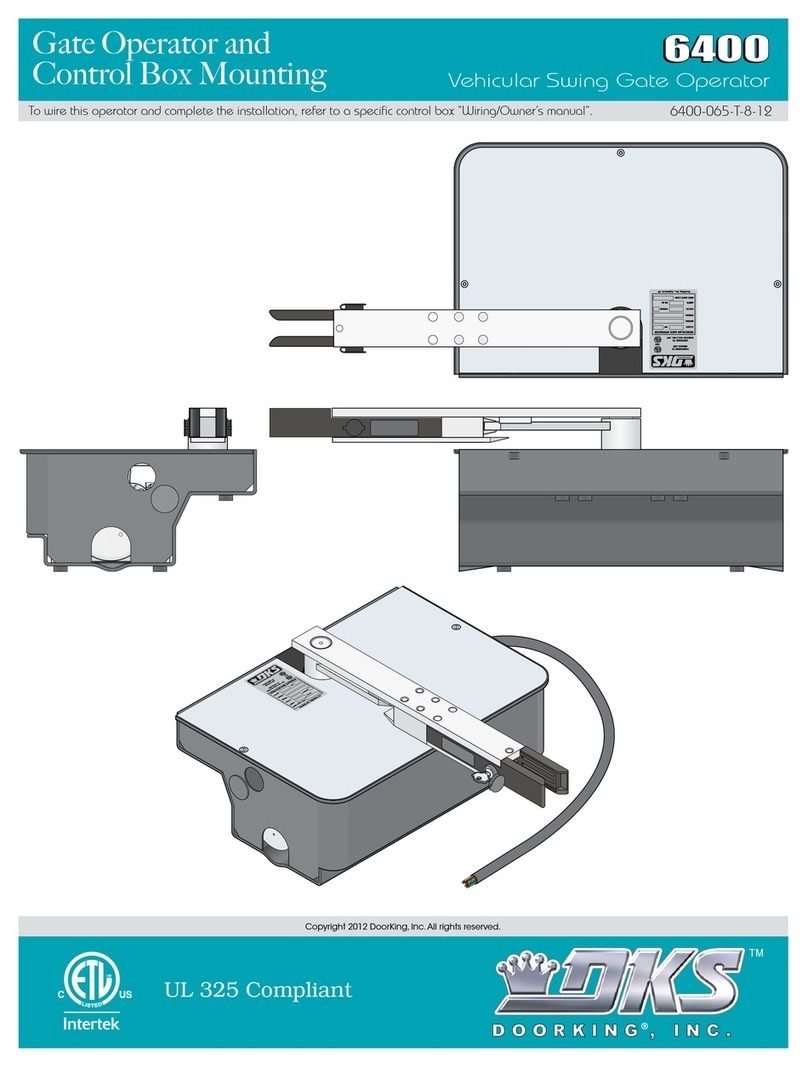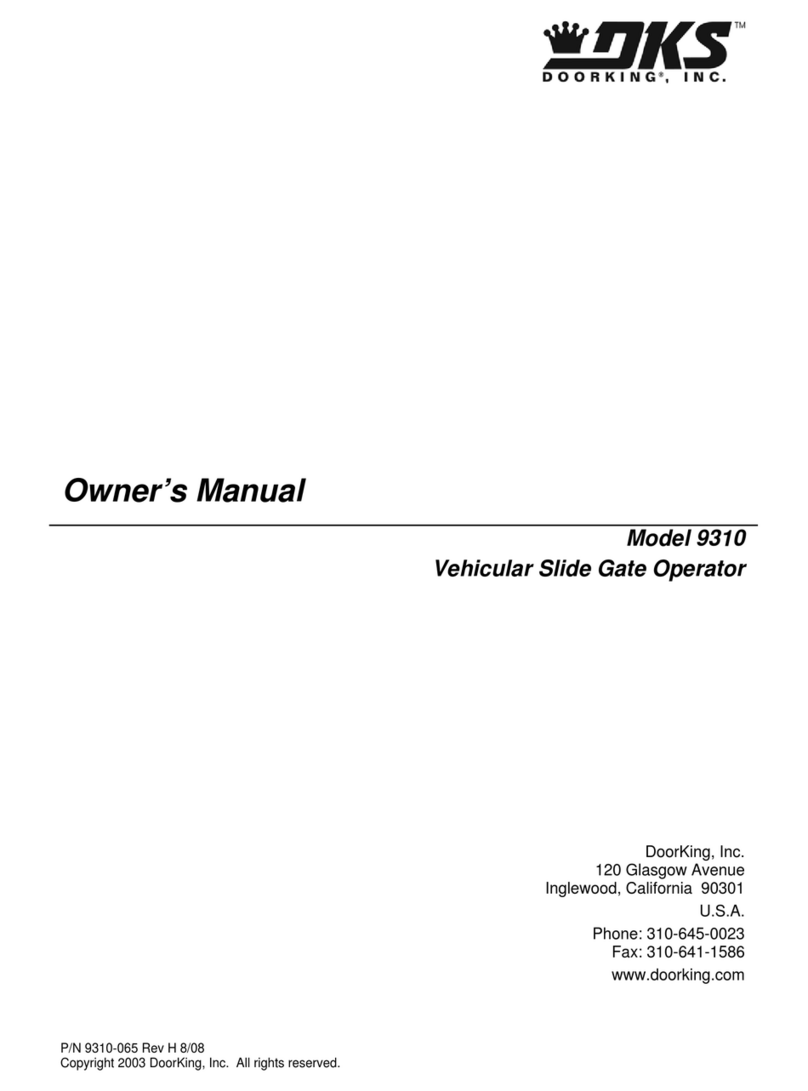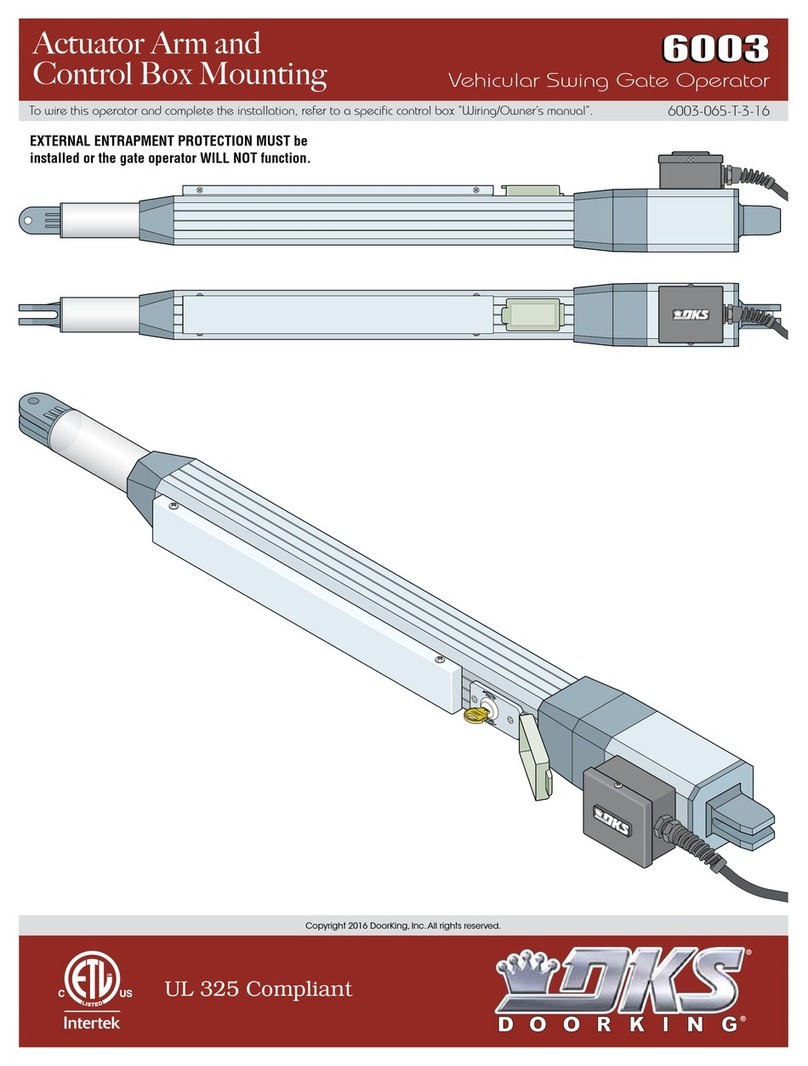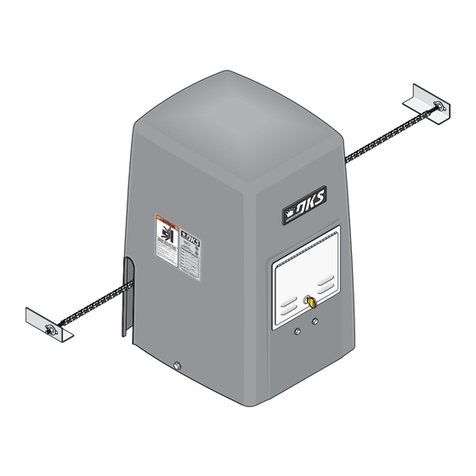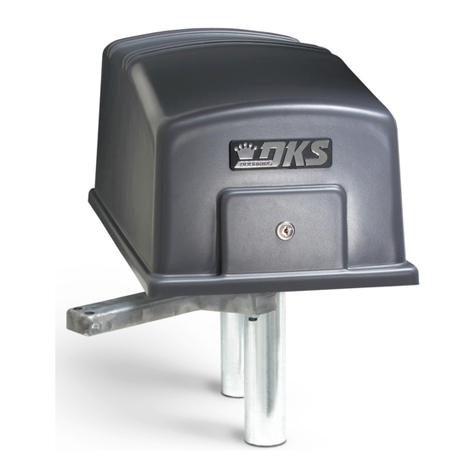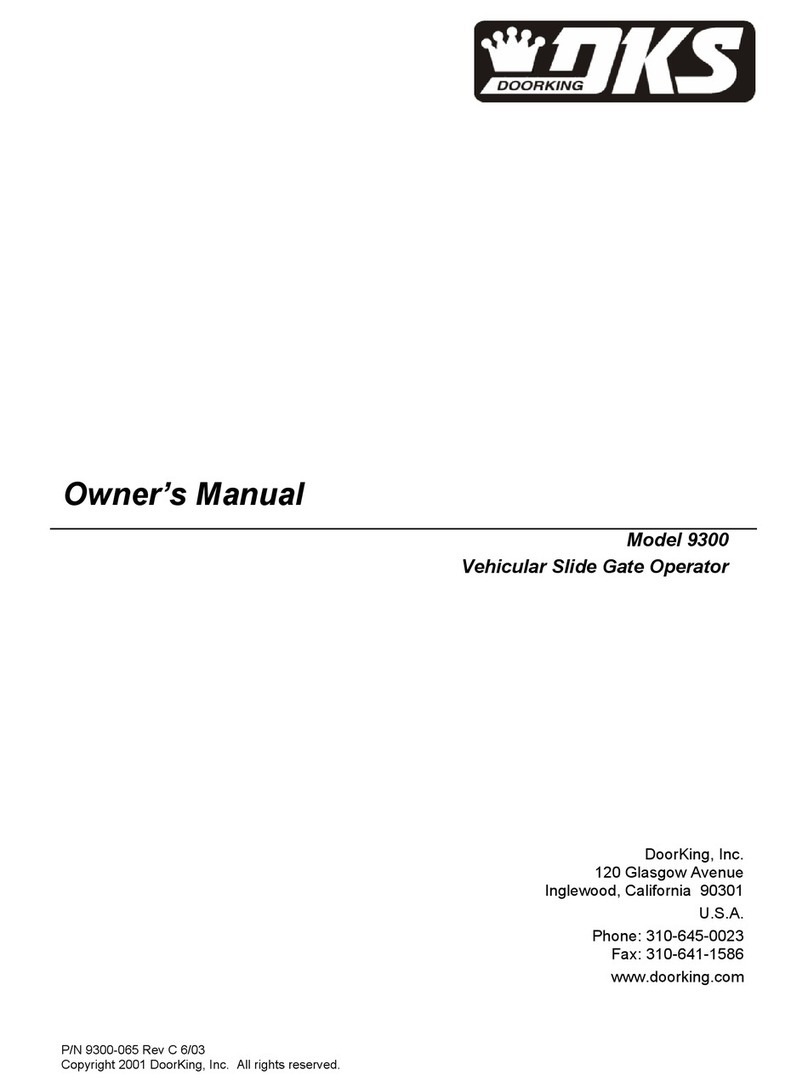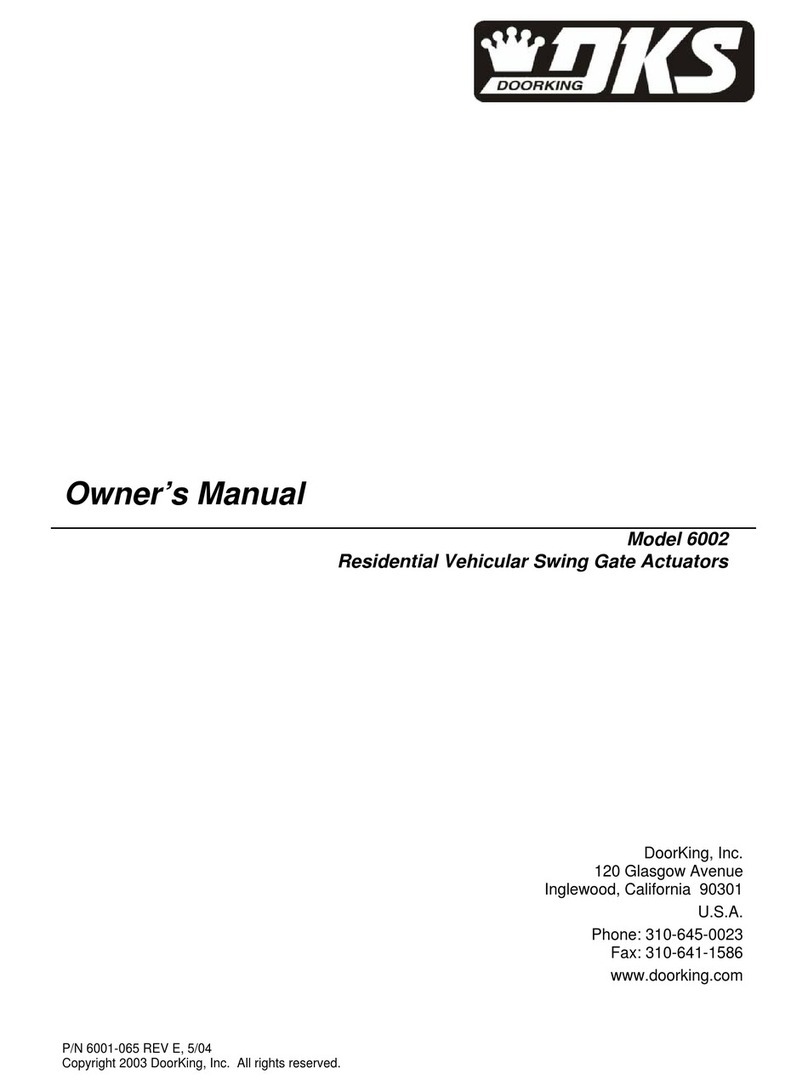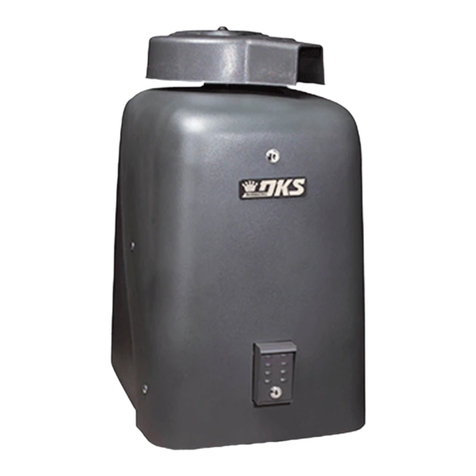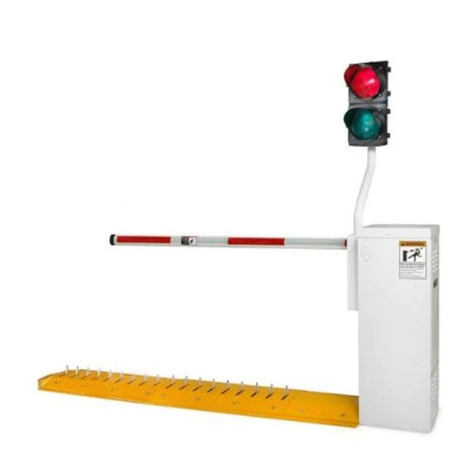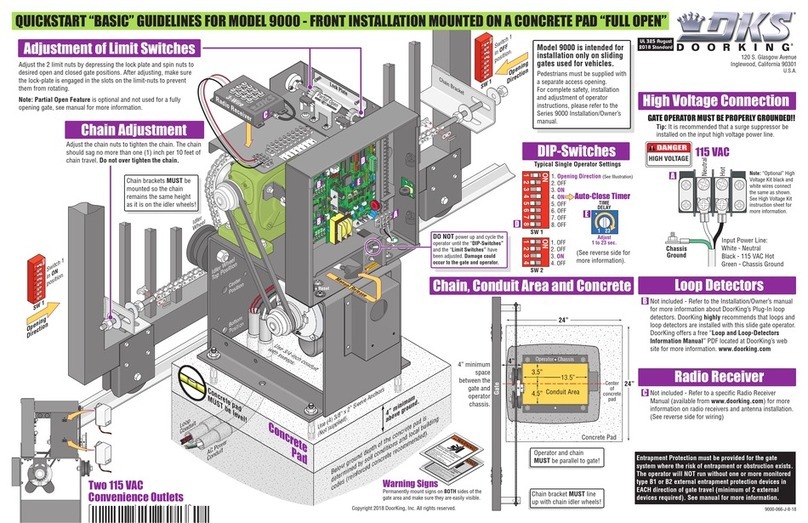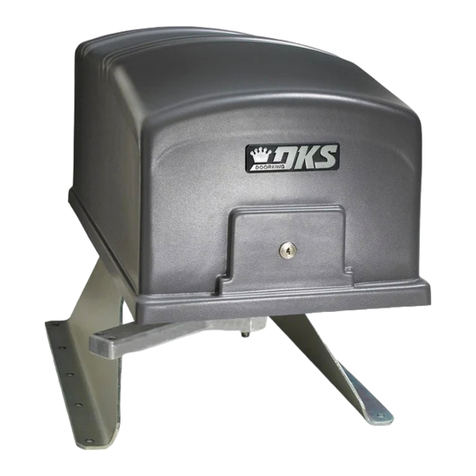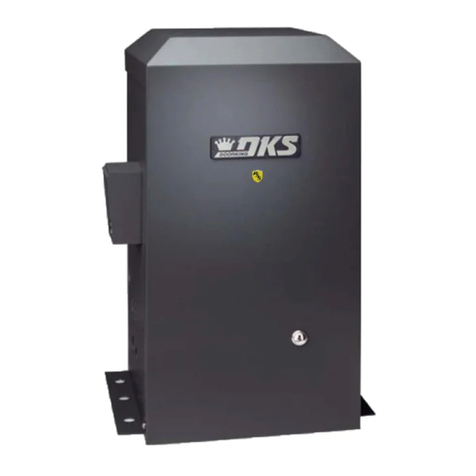
6002-065-G-08-06
4 installation guide
HAZARD ZONE
general information / safety instructions
1
Residents should be familiar
with proper use of gate, gate-
operator and possible hazards
associated with the gate system.
Eliminate or guard all exposed pinch points
and rollers.
Keep children away from gate controls.
Keep remote control away from children.
Security features should be installed to
avoid unauthorized use.
Controls must be installed away from the
gate (min. 10’ ft. away from gate) to avoid any
contact when operating the gate controls.
Keep adults, children and objects away from
the gate and HAZARD ZONES while in motion.
Speed limit through gate area is 5 MPH.
Install speed bumps and warning signs where
visible in the area of the gate. Failure to do so
may result in damage to the gate, gate-operator
and vehicle.
Gate operator is intended for installation on
gates used ONLY FOR VEHICULAR TRAFFIC.
Pedestrians must be provided with a separate
access and must stay out of the HAZARD
ZONE.
When removing the gate operator set to
the full open position and shut off power at the
service panel.
Vehicular gates should be constructed and
installed in accordance with ASTM F2200-
02, Standard Specifi cation for Automated
Vehicular Gate Construction. Contact ASTM at
610.832.9585 or www.astm.org.
Gates should be properly installed,
move freely and maintained following the
recommended service schedule. Contact your
service dealer for any maintenance or repairs.
User should be familiar with the following
functions:
Gate Operating System
Reversing Functions and Testing
Reversing Loops
Inherent Reversing System
Electric Edges
Photoelectric Cells
Related External Devices
Vehicular gate systems can produce high
levels of force; therefore it is important that you
are aware of possible hazards.
Pinch Points
Entrapment
Absence of Controlled Pedestrian Access
Traffi c Backup
